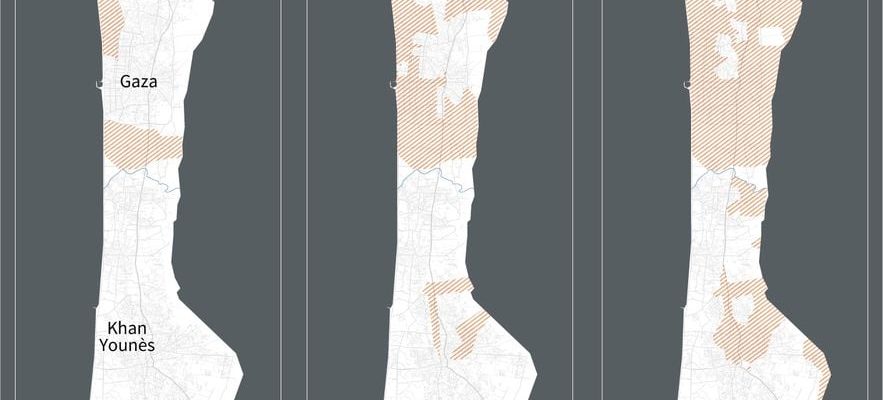This Sunday, January 7, marks the entry into its fourth month of the war between Israel and Hamas, triggered by the massacre of October 7, 2023 in Israel organized by the Islamist terrorist movement. This bloody attack resulted in the deaths of approximately 1,140 Israelis and the taking of 251 hostages.
In retaliation, Israel has been carrying out massive bombings and ground operations in Gaza for almost three months to dismantle Hamas. Which made this piece of territory “a place of hell and despair” and “uninhabitable” according to the UN, and killed more than 22,700 Palestinians, according to data communicated by Hamas authorities. A look back in five graphs at these three months of war.
In Gaza, IDF ground operations advance south
© / AFP
This Sunday, January 7, General Daniel Hagari, spokesperson for the Israeli army, announced that they had “completed the dismantling of the military structure of the Palestinian Islamist movement Hamas in the north of the Gaza Strip.” The IDF is now focusing on “the center and the south” of this territory, he said.
Arriving through the northern border of Gaza City from October 27, the Israeli military slowly took control of the vast majority of the northern half of the territory, where they “hunted down” Hamas members, on land and in below, Gaza has a complex network of tunnels running nearly 500 kilometers. In recent weeks, the Israeli army has deployed in the north of the Gaza Strip, then towards Khan Younes (in the south) and recently in the camps in the center of this territory.
In the center and south of the Gaza Strip “we are going to do it differently” than in the North, General Hagari said. “The refugee camps in the central Gaza Strip are crowded and full of terrorists,” he said, referring to those in Nusseirat, Al-Bureij, Al-Maghazi, and Deir el-Balah. In the south, the large urban area of ”Khan Younes has an underground city of tunnels with multiple ramifications. It takes time, there are no shortcuts in the fight against terrorism,” he added.
Sprawling camps keep growing
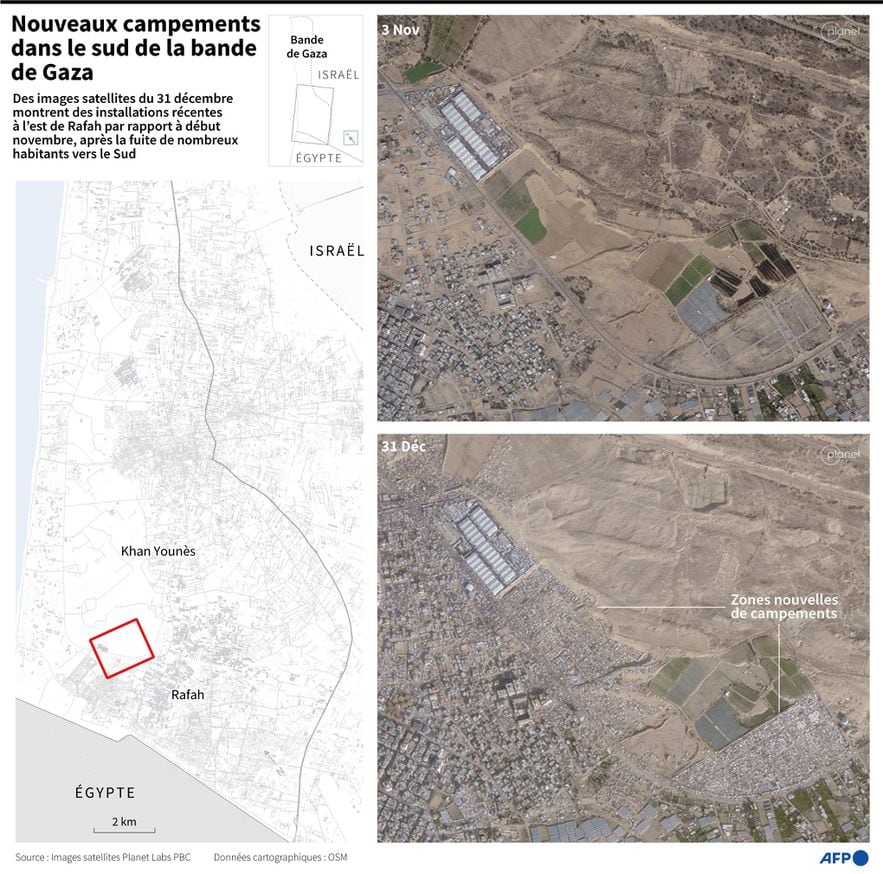
© / AFP
In three months, around 1.9 million Palestinians were displaced within this territory, or 85% of the population according to the UN. The majority of them live massed in refugee camps which extend as far as the eye can see, in the center of the territory but especially in the city of Rafah, which houses the only military checkpoint not controlled by Israel. Several refugee camps have been bombed since the start of the ground offensive, such as Jabaliya (in the north), causing dozens of deaths according to Hamas.
While the UN denounces unlivable humanitarian conditions for the millions displaced within this territory which has become “unlivable”, the World Health Organization (WHO) has warned of the growing threat of the spread of infectious diseases.
Food insecurity turns into famine
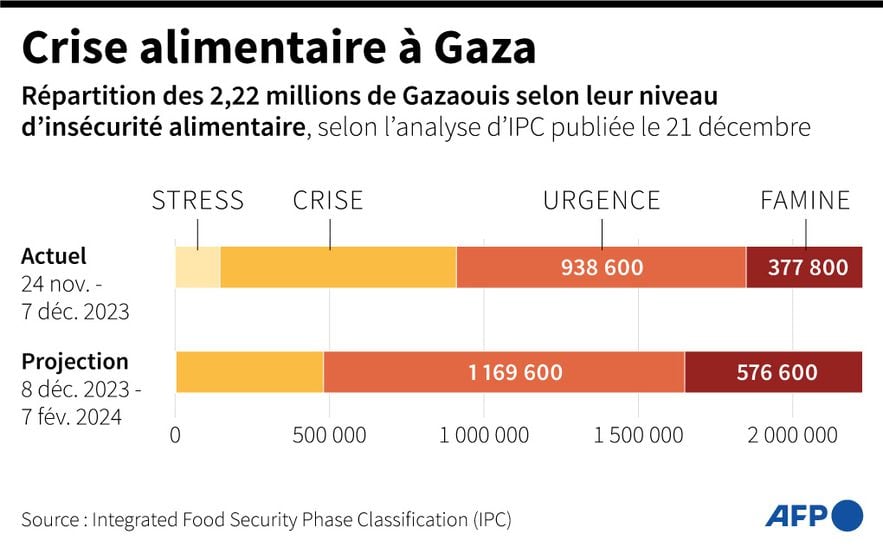
© / AFP
The war has caused immense destruction and a humanitarian disaster in the Palestinian territory, where famine threatens and most hospitals are out of service. The 2.4 million residents face severe shortages of food, water, fuel and medicine. According to the Integrated Food Security Phase Classification, there were already more than 900,000 Palestinians living in a food emergency situation, and 377,000 living in a famine situation at the beginning of December 2023. By the beginning of February, more half a million of them could live in famine.
Despite a UN Security Council resolution demanding the delivery of humanitarian aid, only a few dozen trucks enter the strip daily, while 500 trucks each day were needed to ensure the food and health of the population. before the war even started. Recently, France and Jordan airdropped seven tons of humanitarian and health aid.
108 hostages still held by Hamas
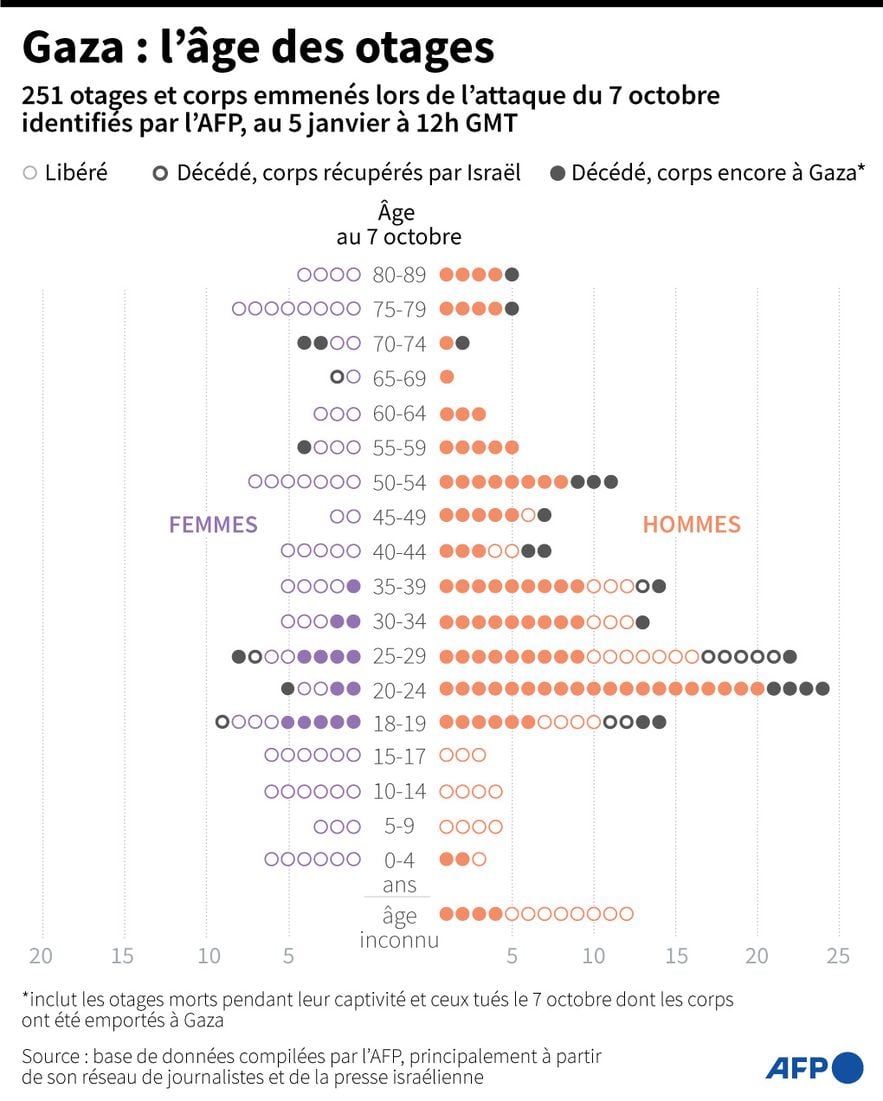
© / AFP
251 hostages were taken during the October 7 attack carried out by Hamas on the Israeli border. Three months later, 71 women and 40 men were released after lengthy negotiations, often involving the second country of the binational hostages.
According to the AFP count, 34 hostages died in the territory, and among them 23 bodies are still in Gaza. On Thursday, January 4, the Israeli army announced that three Israelis missing since October 7 are also being held hostage, bringing the number of living Israelis still detained in Gaza to 108.
The risk of a regional conflagration
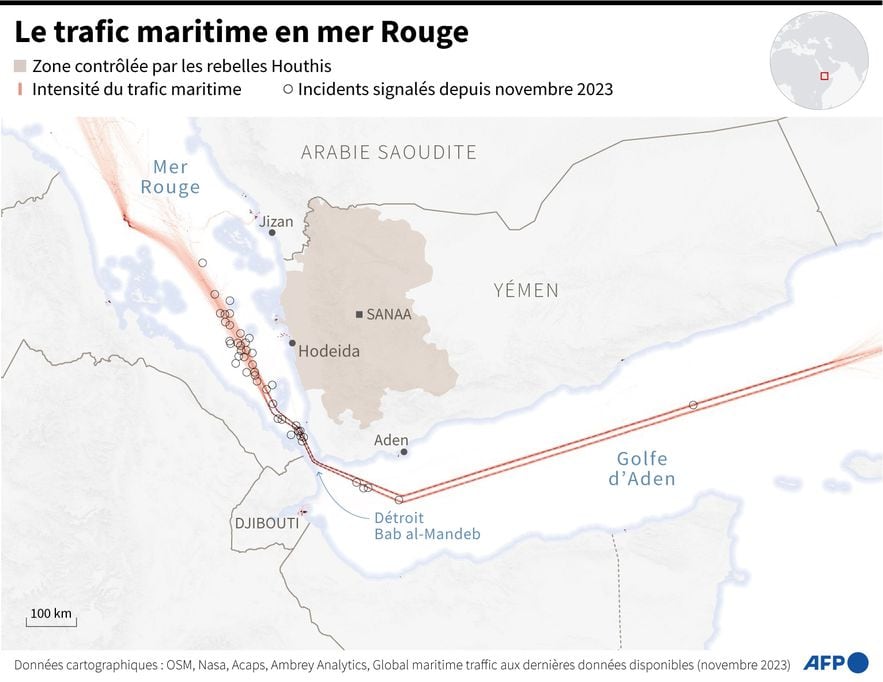
© / AFP
Clashes outside the Gaza Strip have spread in recent weeks, causing Westerners to fear an escalation of conflict throughout the region. The elimination by Israel of the number 2 of Hamas in a stronghold of Beirut caused, Saturday January 6 in the morning, an escalation of tensions on the Israeli-Lebanese border, with the launch of around forty rockets on a military base in the north of Israel. In the occupied West Bank, a raid by Israeli forces cost the lives of eight Palestinians in Jenin, according to the Palestinian Authority. Two Israelis, a policewoman and a civilian, also died.
In Syria and Iraq, attacks on US military bases have also increased, while the Houthis in Yemen continue to disrupt global maritime traffic in the Red Sea by attacking ships there. All are members of the “resistance axis” hostile to Israel led by Tehran, which supports Hamas. At least 25 Houthi attacks on international ships have taken place since mid-November, according to the US military Middle East Command (Centcom), including an “operation” last Tuesday against a ship from the French carrier CMA-CGM.
This Sunday, January 7, Foreign Minister Catherine Colonna said she had called on Iran “and its cronies” to “immediately” stop their “destabilizing actions.” Antony Blinken, the American Secretary of State – whose country is the main political and military supporter of Israel – is also starting a new tour of the Middle East this weekend, with the aim of discouraging the generalization of the conflict.
